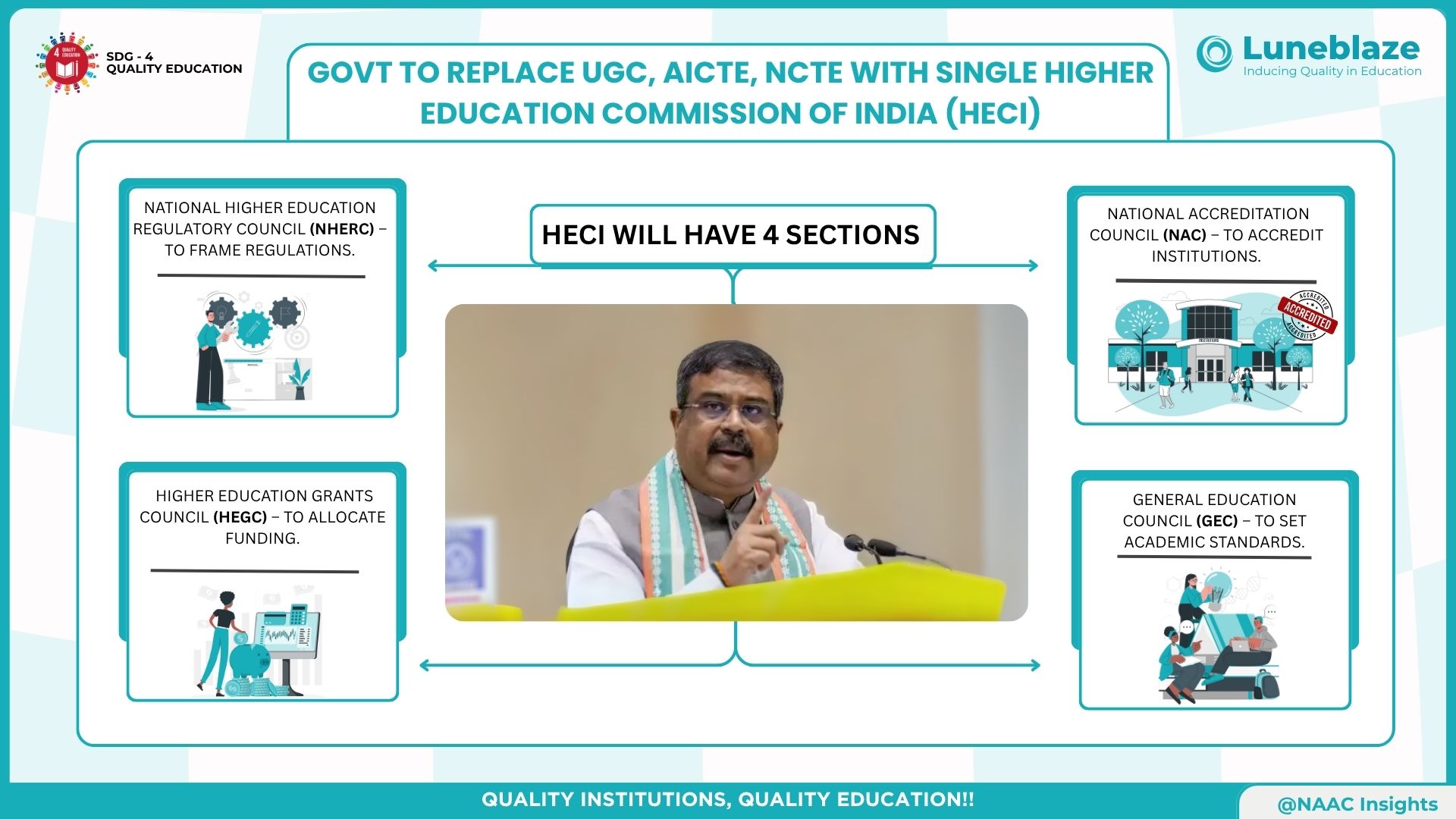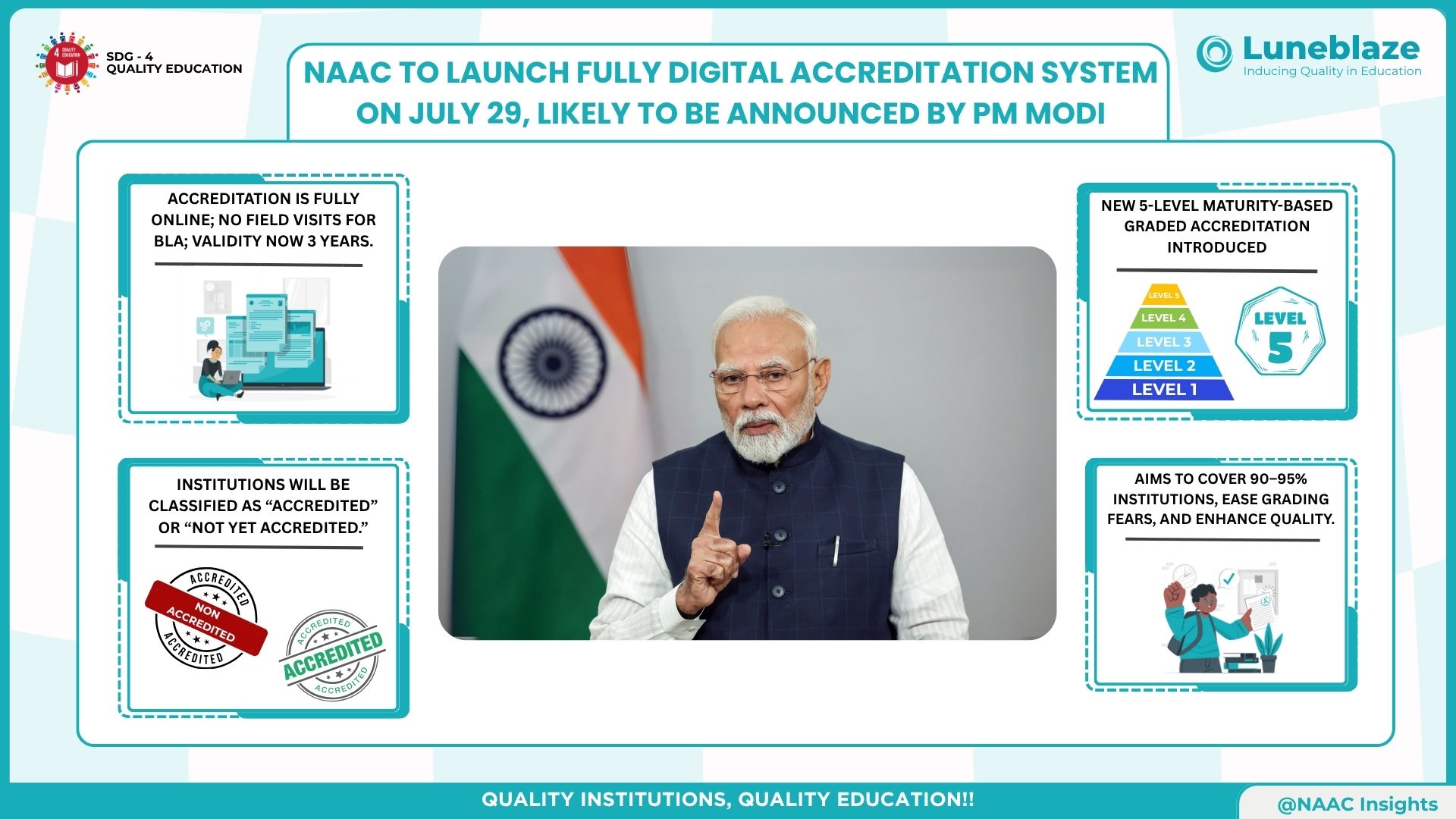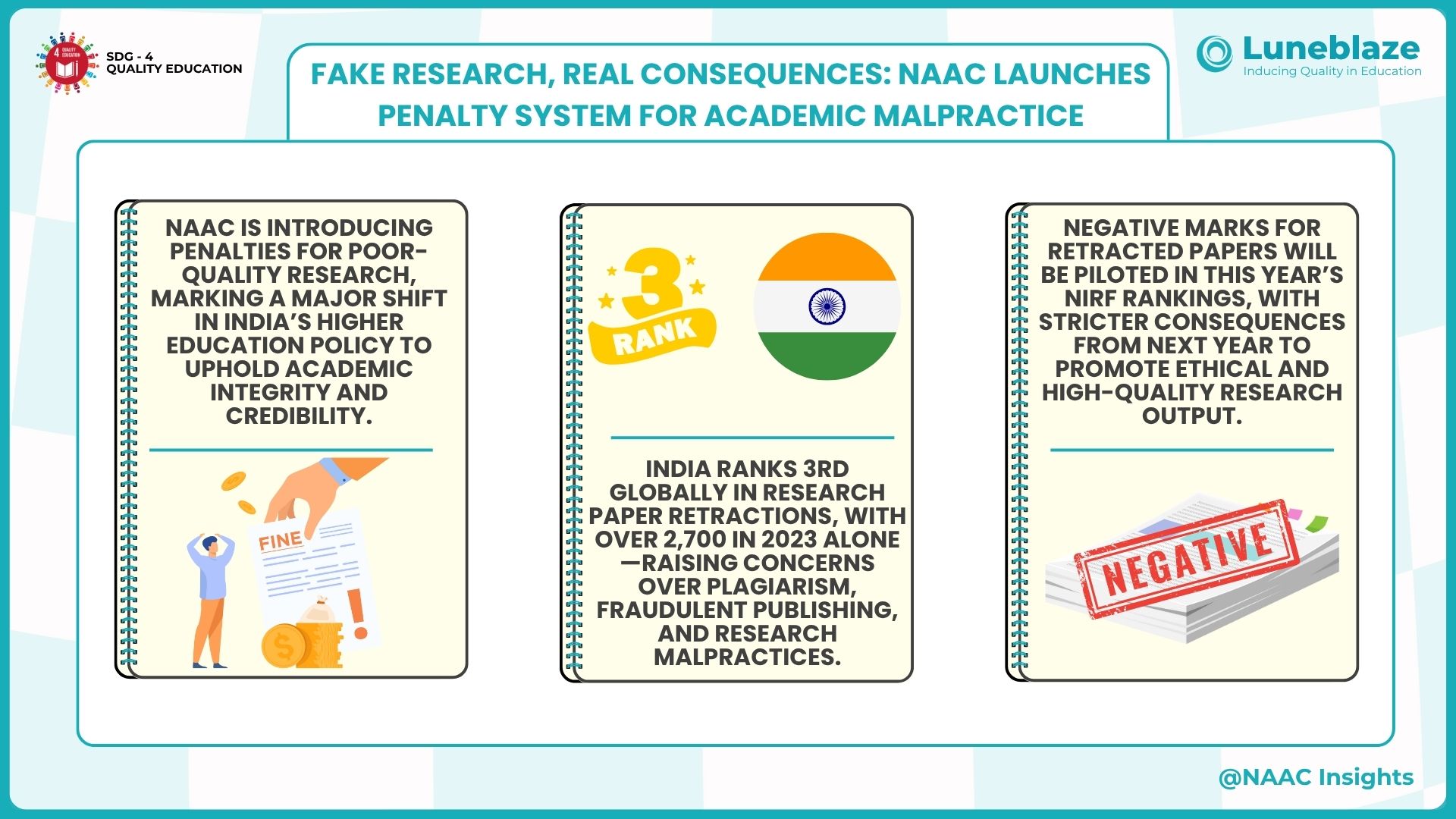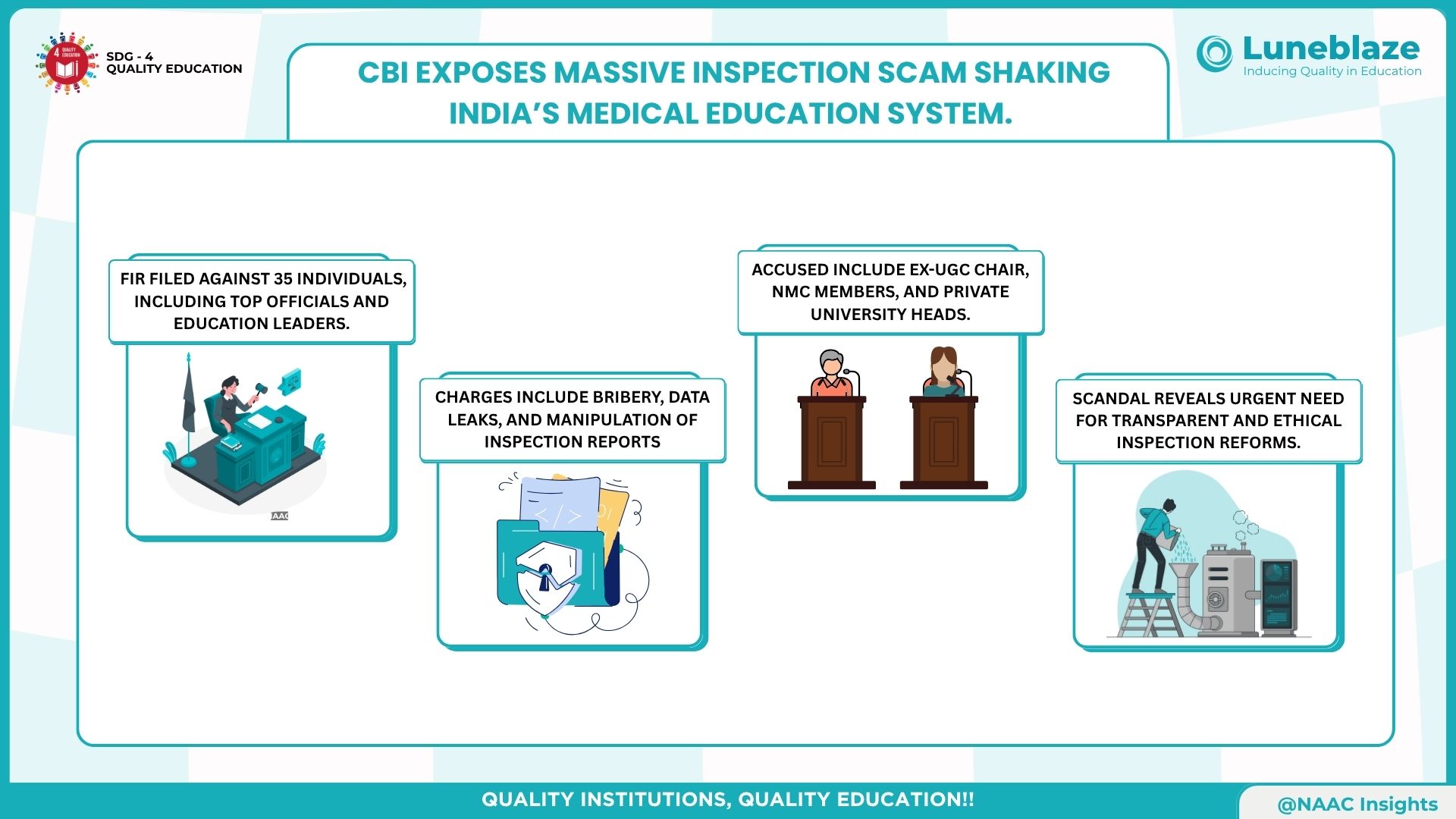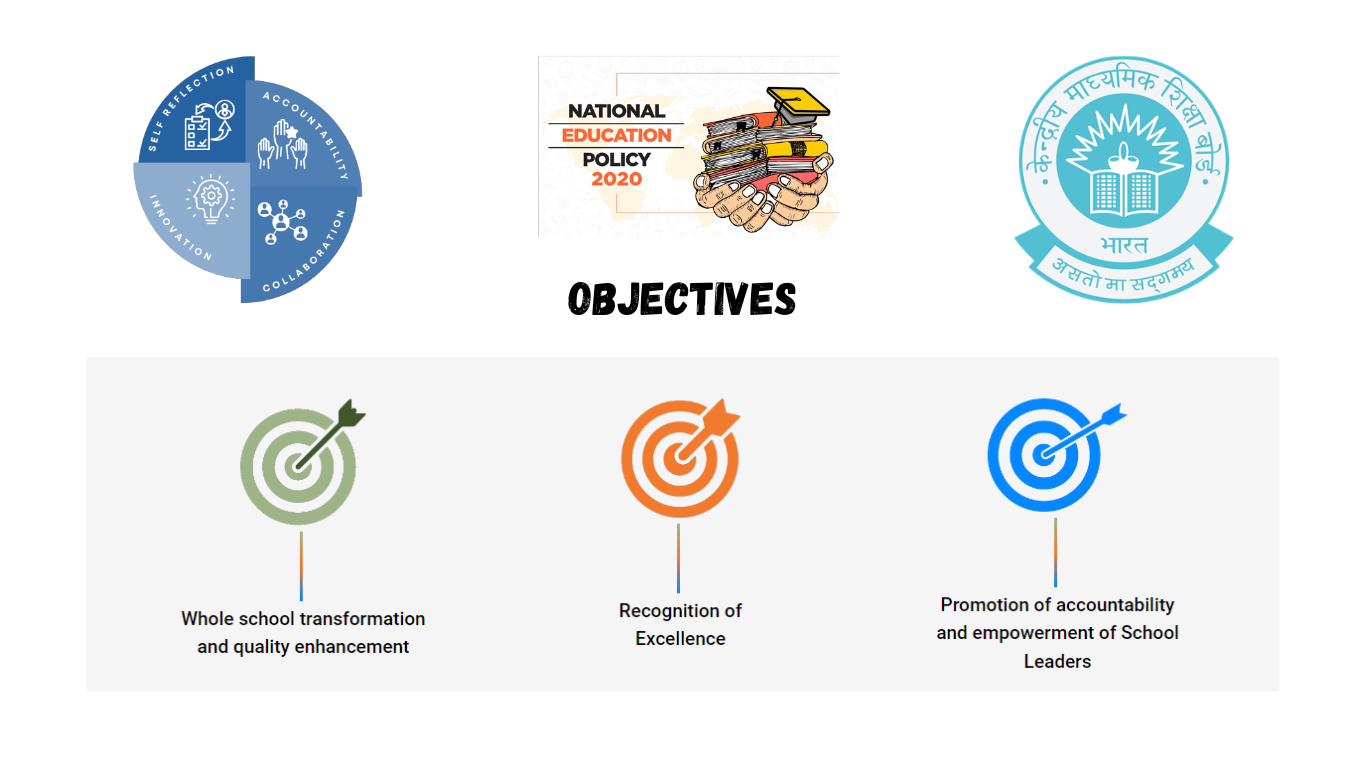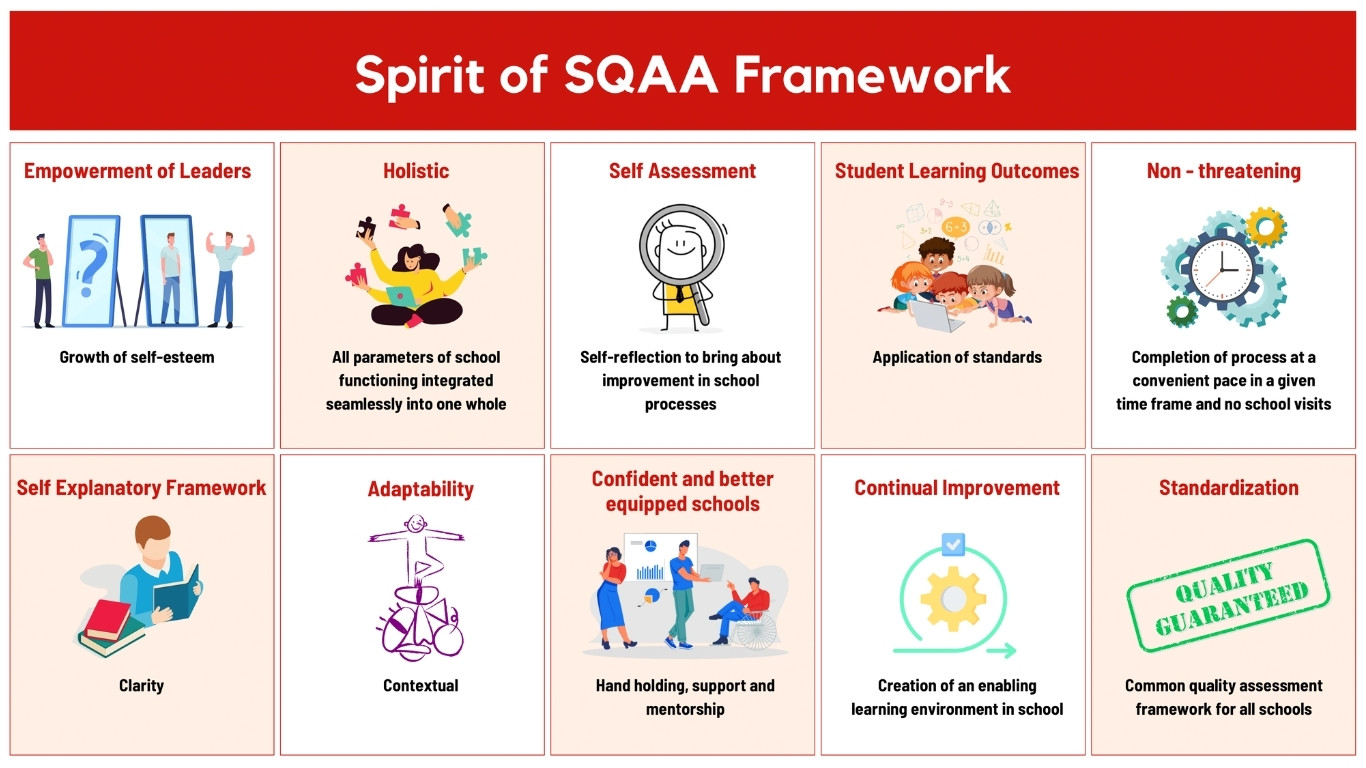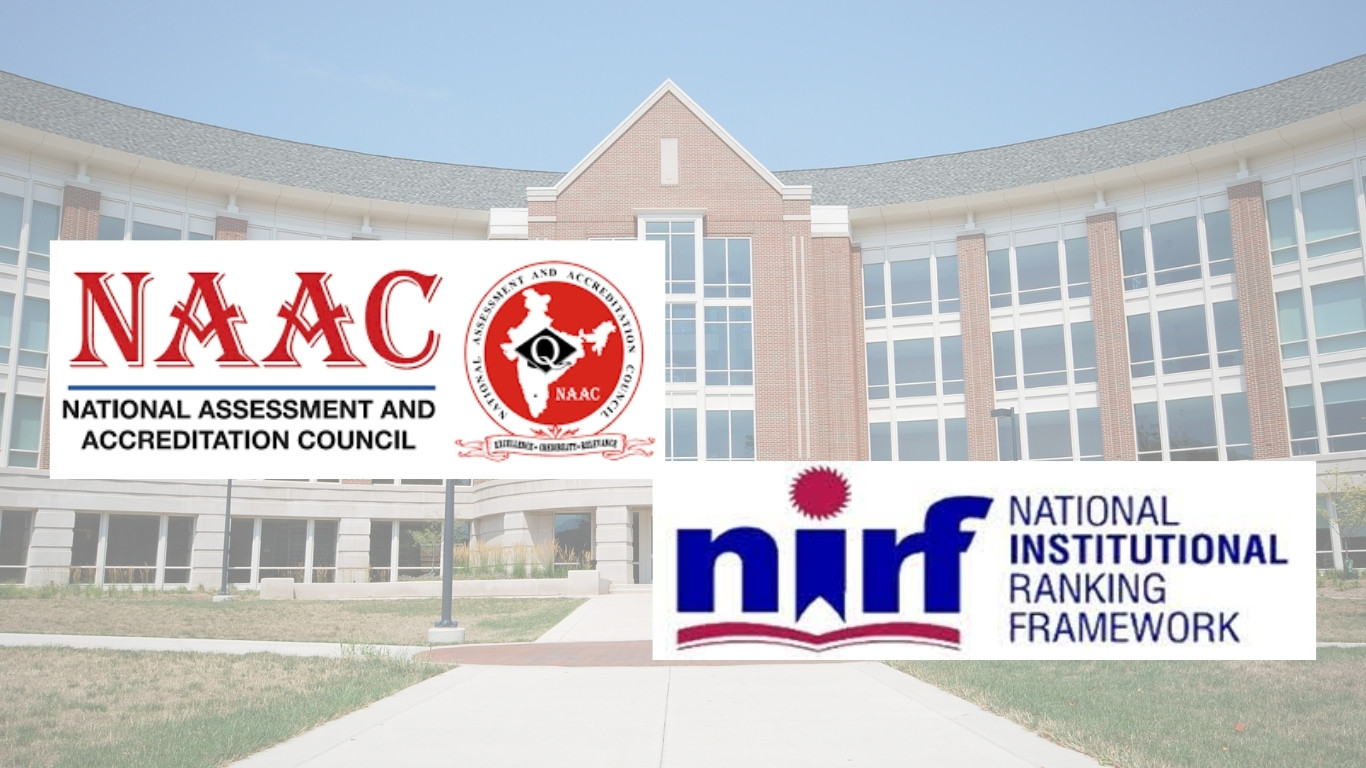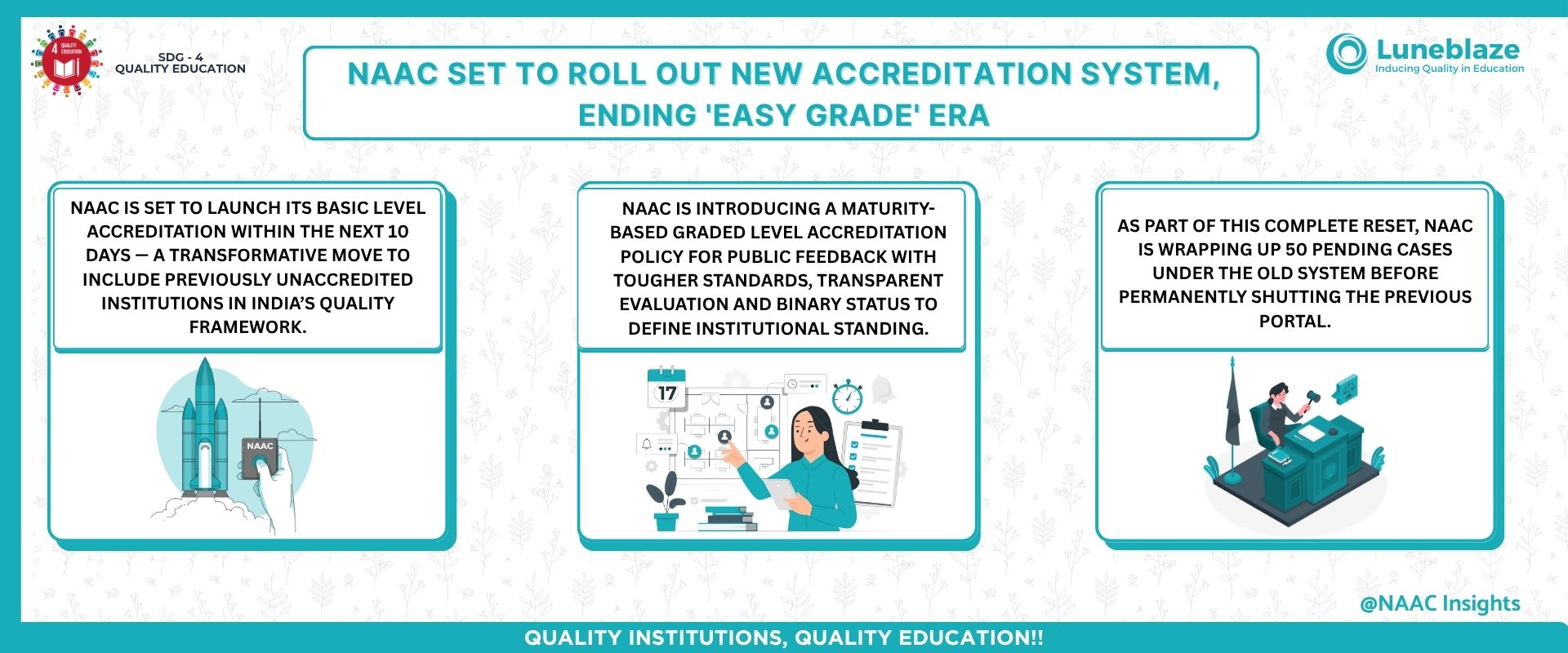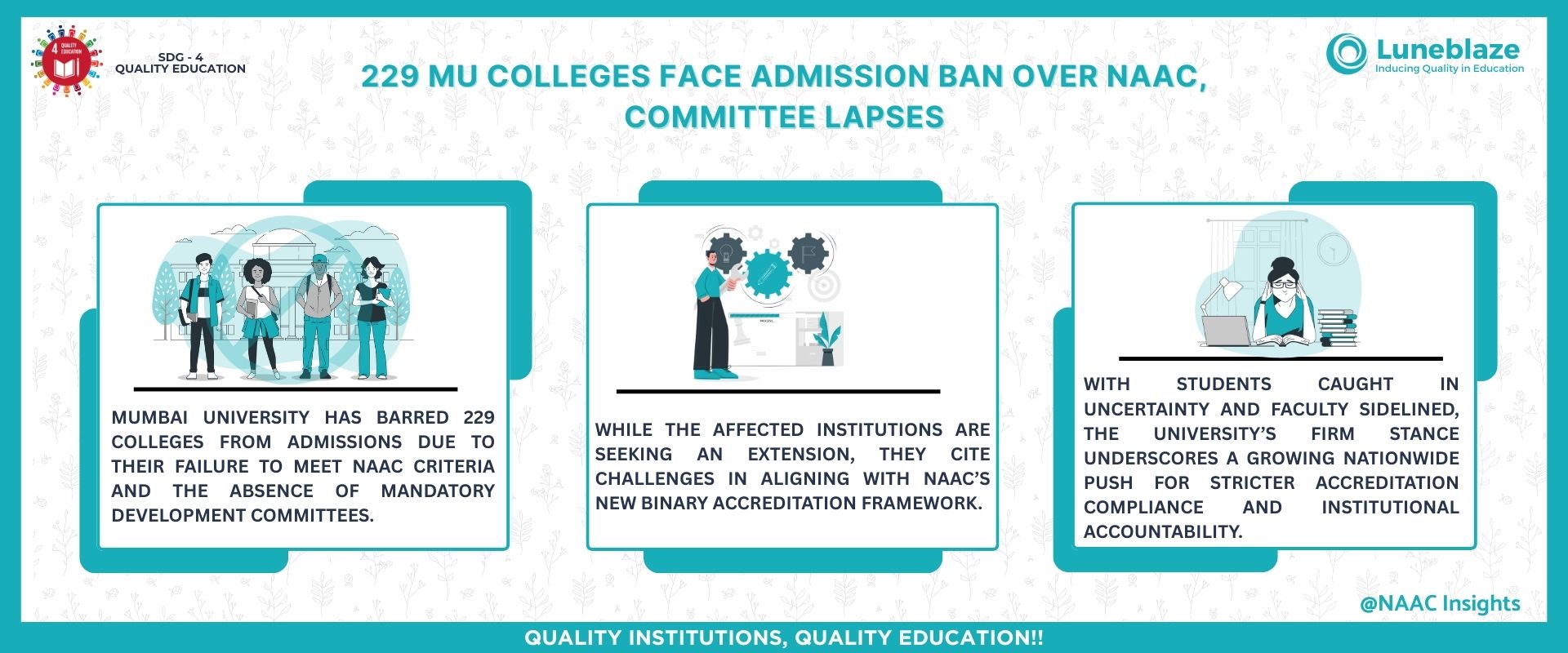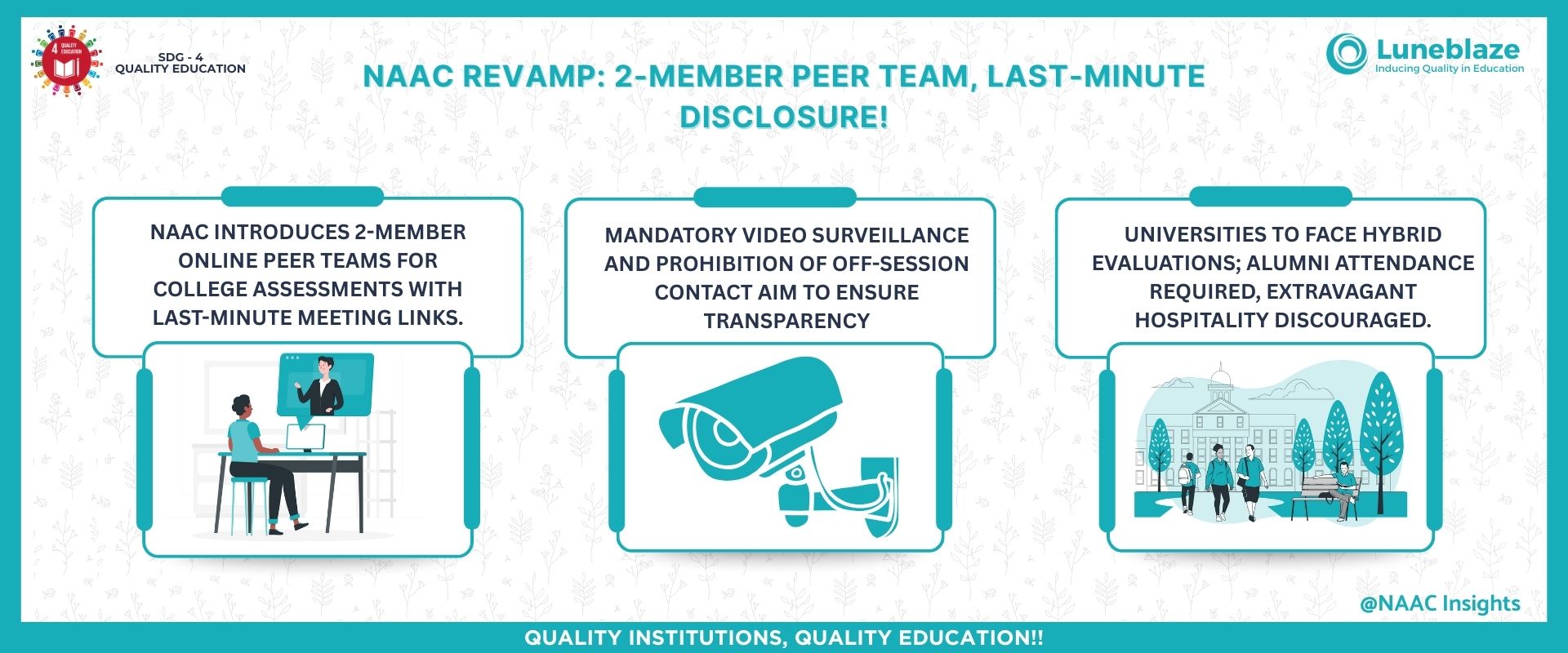New NAAC System to Use AI-Driven Assessment & Online Verification
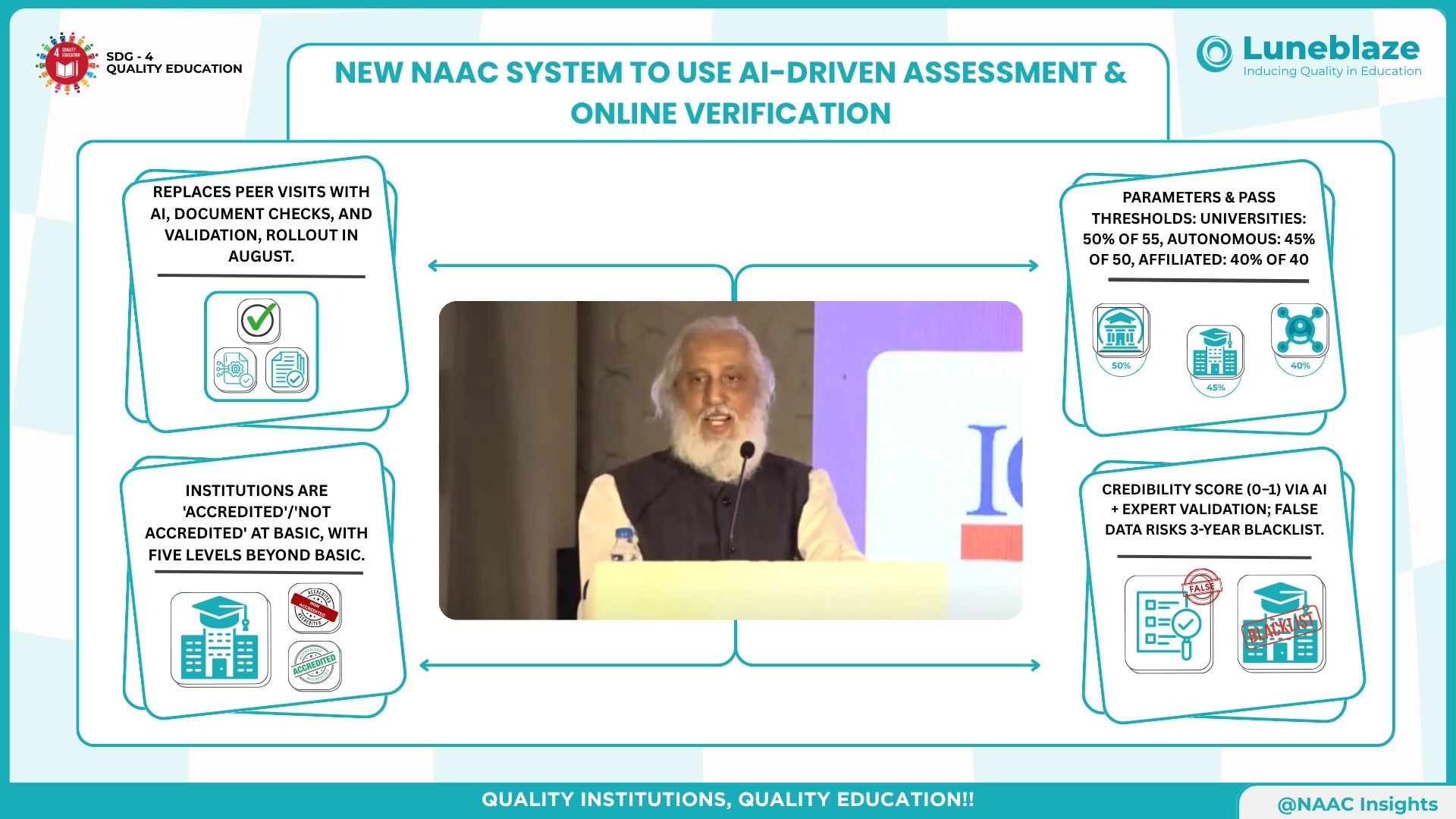
Jul 31, 2025
In a sweeping reform set to redefine quality assurance in Indian higher education, the National Assessment and Accreditation Council (NAAC) will roll out an AI-driven accreditation system this August, eliminating physical inspections and replacing them with a data-driven, technology-backed framework.
The announcement, made by NAAC Chairman Prof. Anil Sahasrabudhe, signals a monumental shift in how universities and colleges will be assessed in the coming years. The new system aims to accredit over 90% of India’s higher education institutions (HEIs) within five years—a significant leap from the current 40% of universities and just 18% of colleges.
Gone are the days of elaborate campus visits and peer review teams. The new framework will be fully online for basic accreditation, relying on verified documents, AI validation, and crowdsourced stakeholder reviews.
Under the old model, 70% of accreditation depended on documents and 30% on peer visits—often a source of integrity concerns and logistical complications. The new system is designed to be faster, fairer, and tamper-proof.
A standout feature is the use of machine learning to assess institutional claims. Once an institute uploads its data, an AI engine scans and cross-verifies it with inputs from a randomly selected panel of 100+ stakeholders—ranging from retired VCs and industry leaders to academics and NGOs. Based on their feedback, each institution will receive a credibility score (0 to 1).
Institutes will begin with a default score of 0.5. Consistency and transparency can boost the score; forged or inconsistent data will lower it. Institutions caught submitting fake documentation risk disqualification for up to three years.
“This is our indigenous model of stakeholder validation,” said Prof. Sahasrabudhe. “We believe in trust—but with verification.”
The new system introduces two layers of accreditation:
Basic Accreditation
Simple binary outcome: "Accredited" or "Not Accredited"
Parameter counts:
Universities: 55
Autonomous colleges: 50
Affiliated colleges: 40
Minimum thresholds:
Universities: 50%
Autonomous colleges: 45%
Affiliated colleges: 40%
Maturity-Based Graded Accreditation
Five ascending levels: Level 1 to Level 5
For institutions seeking to go beyond the basics
Complexity and number of parameters increase with each level
Physical visits may return at Levels 3-5 in hybrid mode (part online, part on-site)
A key integrity safeguard: Institutions that submit false or forged documents risk being blacklisted.
“If an institution submits fake documents, its score will fall. Institutions found guilty may be barred from accreditation for up to three years,” Prof. Sahasrabudhe said.
This firm stance is part of NAAC's "trust with verification" principle and reflects the council’s move toward zero tolerance for manipulation or malpractice in quality assurance.
Accredited institutions under the previous system (e.g., NAAC grades A, A+, A++) can directly apply for the graded levels.
The updated accreditation system is fully aligned with the National Education Policy (NEP), incorporating themes such as multilingualism, sustainability, innovation, and internationalisation. Foreign universities planning to establish campuses in India will also be eligible to apply.
What This Means for Institutions
Speed & Scalability: The digital-first model ensures faster processing and potential for mass coverage.
Transparency & Integrity: AI validation and crowdsourced reviews reduce bias and manipulation.
Voluntary Excellence: Institutions can choose to opt-in for higher levels, promoting continuous improvement.
“This is not just an evaluation system—it’s a cultural shift,” said Prof. Sahasrabudhe. “We’re putting institutions on a path of self-driven excellence with accountability built in.”
Stay tuned for more updates on Higher Education Accreditation!
Source: [ANI News]
Trusted by
100+
Institutions
worldwide
since 2017
Get started with Accreditation Excellence
Explore how our AI-enabled accreditation solution simplifies the accreditation journey

